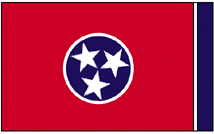[« Hmmmmmm.... have we tried everything else?] [Thought for the Day: »]
09/28/2005: Holiday to the Big Apple...
I’m off on a weekend Holiday to NY City. So, Len and Brock will certainly continue to “entertain” ya'all if I find myself unable to have WiFi access or the time to post.
But I have few long articles to get posted, like this one about the NOLA shipping canal and the Flooding from Hurricane Katrina.
Click on the “more” button to read further- and Enjoy.
:-)
Canal May Have Worsened City's Flooding: Disputed Project Was a 'Funnel' for Surge, Some Say.
By Michael Grunwald (Washington Post)
On May 19, Hassan Mashriqui addressed a roomful of emergency planners and warned of a "critical and fundamental flaw" in the coastal defenses for New Orleans. Mashriqui, a computer modeler at Louisiana State University's Hurricane Center, singled out the Mississippi River Gulf Outlet, a 40-year-old shipping canal aimed at the city's gut.
For years, local residents had decried the little-used canal as a "hurricane highway" that would deliver massive storm surges into their neighborhoods.
But now Mashriqui was offering proof. His hydrodynamic modeling showed that a "funnel" created by the Gulf Outlet and a nearby waterway would amplify storm surges by 20 to 40 percent. He described the funnel as "Crescent City's Trojan Horse," carrying the Gulf of Mexico's waters into the city.
"I showed how dangerous that outlet was -- there was no ambiguity," says Mashriqui, who came to the United States after a tropical cyclone devastated his native Bangladesh. "And now it's all come true."
Authorities have not yet concluded what caused the drowning of New Orleans, and most attention has focused on two breached floodwalls near Lake Pontchartrain, to the city's north. But now experts believe that the initial flooding that overwhelmed St. Bernard Parish and the Lower Ninth Ward of New Orleans came from the Gulf Outlet, a channel that was an ecological and economic disappointment long before Hurricane Katrina.
Satellite images show that levees along the outlet were severely damaged by storm surges. Flyovers by the Army Corps of Engineers have revealed a path of destruction consistent with Mashriqui's theory that the Outlet provided a pathway for storm surges from the Gulf and neighboring Lake Borgne.
Mashriqui had warned that the confluence of the MRGO and the Gulf Intracoastal Waterway created a funnel that would direct storm surges into the New Orleans Industrial Canal and on into St. Bernard Parish. On the Friday before Katrina made landfall, the parish's state senator, Walter Boasso, complained at a congressional hearing that the federal government was "playing Russian roulette" with his constituents.
Katrina's first storm surges apparently shot up the Gulf Outlet and neighboring Lake Borgne from the southeast, then overtopped levees along the Outlet and the Industrial Canal. The floodwaters eventually breached the Industrial Canal's levees, and officials believe a large portion of the Outlet's levees have been destroyed as well.
"That funnel was a back door into New Orleans," said G. Paul Kemp, an oceanographer at the LSU Hurricane Center. "I don't think there's much doubt that was the initial cause of the disaster."
In 1965, the Corps of Engineers completed the MRGO -- pronounced "Mr. Go" locally -- which was a larger dirt-moving project than the Panama Canal. It was designed as a 76-mile shipping shortcut from the Gulf of Mexico to the Port of New Orleans that would give cargo ships an alternative to the sinuous Mississippi River.
But less than 3 percent of the port's cargo -- fewer than one ship per day -- passes through it. MRGO's freight totals had dropped by half since 1994, while the port's had increased overall. But the Corps still spent $13 million dredging the canal last year.
Critics have calculated the cost to taxpayers at more than $12,000 per vessel per day, and the Outlet has destroyed or damaged more than 20,000 acres of adjacent wetlands.
Shirley Laska, director of the Center for Hazards Assessment, Response and Technology at the University of New Orleans, says local flood-control meetings have been dominated for years by complaints about the Outlet, but nothing has changed.
Before Katrina, the Corps was already studying whether to close the canal. The initial conclusion was no, but the Bush administration ordered the agency to redo its analysis.
The main advocates for the channel were the Port of New Orleans and its supporters in the Corps of Engineers and in Louisiana's congressional delegation. "You had the people of St. Bernard Parish against the Port of New Orleans," Boasso said at a community meeting Monday. "And the Port of New Orleans had the clout."
Port Director Gary LaGrange said "the jury is still out" on whether MRGO contributed to Katrina's devastation. But he said the port would have been willing to give up the Outlet if the Corps had completed a $750 million project to expand a lock on the Industrial Canal, another little-used shipping channel.
Most ships heading to New Orleans use the Mississippi River, but LaGrange said many local businesses rely on the alternative routes, including America's largest chicken exporter -- which now has 5 million pounds of rotting meat on its hands.
In any case, LaGrange said, the city would never have drowned if Congress had authorized levees protecting it from a Category 5 hurricane, instead of a Category 3.
"We've been stuffing a 250-pound body into 180-pound pants," he said. "That's your problem right there."
But in 1998, the St. Bernard Parish Council unanimously called for the channel's closing. In 2002, an LSU study noted that "locally, the MRGO is perceived as a superhighway for storm surge because of the channel's susceptibility to inundation by tropical storms and hurricanes." In 2004, a federally funded simulation drill called Hurricane Pam concluded that surges from a Category 3 hurricane would overwhelm the MRGO "funnel," flood surrounding areas and kill tens of thousands of people.
Mashriqui has dedicated his career to preventing a repetition of the Bangladesh catastrophe, and after the grim experience of the Hurricane Pam study, he became an evangelist for building a floodgate across the throat of the funnel.
When he spoke to emergency responders at the Metairie, La., library on "Hurricane Vulnerability Modeling for Southeast Louisiana," the next speaker was an Army Corps engineer. But he said Corps officials told him they could not study anything that was not in their congressional authorization. One colleague at the Hurricane Center predicted that nothing would happen until hundreds of people died.
"I told everyone: If New Orleans is a boat, here are the holes," Mashriqui said. "This is my passion; I don't want people to die in hurricanes. But nobody did anything."
Several current and former Corps of Engineers employees say the Corps' New Orleans district was reluctant to give up MRGO.
In recent years, Corps officials have spoken about closing it. But last year, they estimated their "project capability" for dredging the outlet at a whopping $38 million, signaling their desire to keep it open. "The general feeling was: 'There's no way we're closing that,' " says one biologist who left the district this year. "They wanted all the business they could get."
John Paul Woodley Jr., the assistant Army secretary who oversees the Corps, said the Bush administration had to instruct the agency to restart its study of whether to close the channel, because it hadn't taken into account the channel's destruction of wetlands, even though it was conducting a separate study of a $14 billion project to restore Louisiana's coastal wetlands. Woodley said there was also concern that further erosion could merge the channel with Lake Borgne -- which happened after Katrina.
Yesterday, Woodley pointedly declined to rule out the possibility that MRGO contributed to the tragedy of Katrina. "I've heard those concerns, and I wouldn't discount them," he said.
Woodley cautioned that the investigation of the catastrophe has just begun, but many scientists, environmentalists and St. Bernard Parish officials said they do not need a forensic investigation by the Corps of Engineers to know that their warnings have come true. Larry Ingargiola, the head of emergency management in St. Bernard, said he knows exactly why only 52 of its 28,000 structures made it through Katrina unscathed.
"That's where the damn water came -- right up MRGO," he said. "We've been screaming about it for years. I don't know how many politicians I've taken on tours. But there it is."
Karen on 09.28.05 @ 07:47 AM CST










